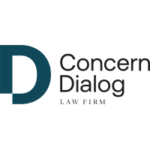*”Complex contracts” refers to contracts including: where the needs of the contracting authority cannot be met without adaptation of readily available solutions; contracts involving design or innovative solutions; where prior negotiation is required before a contract can be awarded due to particular circumstances related to the nature, the complexity or the legal or financial make-up of a contract or because of risks attaching to these circumstances; and where technical specifications cannot be determined with sufficient precision with reference to established technical standards, references or specifications.
-
Please summarise briefly any relationship between the public procurement / government contracting laws in your jurisdiction and those of any supra-national body (such as WTO GPA, EU, UNCITRAL).
The Federal Acquisition Regulation (FAR) is the cornerstone of US federal procurement law. It enumerates regulatory requirements in 53 distinct sections, called parts, that guide and dictate the country’s procedures for the acquisition of supplies, services, and construction materials by the US government. The FAR shares many commonalities with other international public procurement regimes and is a primary mechanism that the US government uses to ensure adherence to its trade agreements with foreign countries when it acquires these goods and services.
The most notable commonality between the FAR other public procurement and government contracting laws is their shared aim to promote fairness and transparency through standardized processes and regulations. The FAR’s emphasis on fair and open competition, integrity, and transparency in the federal procurement process aligns with the objectives of the World Trade Organization’s Government Procurement Agreement (WTO GPA), the European Union (EU) procurement directives, various Free Trade Agreements (FTA and the United Nations Commission on International Trade Law (UNCITRAL), albeit on an international scale or within specific regions.
For example, the FAR incorporates many WTO GPA principles into its procurement regulations and requires that eligible products from WTO GPA and FTAs are subject to nondiscriminatory treatment. Similarly, despite not adopting the UNCITRAL Model Law on Public Procurement, the FAR has substantial parallels with UNCITRAL methodologies. FAR Part 14 “Sealed Bidding” mirrors UNCITRAL’s “open tendering,” while FAR Part 15 “Contracting by Negotiations” resembles UNCITRAL’s competitive negotiations, as seen in UNCITRAL’s “requests for proposals with dialogue.” Moreover, the FAR’s guiding principles articulated in FAR 1.102, which emphasize the promotion of efficiency, transparency, competition, and accountability in government procurement to achieve the best value for taxpayers and support the mission of federal agencies; echo the UNCITRAL Model Law on Public Procurement’s core objective of efficiency, integrity, fairness and competition.
In addition to these shared principles and procurement methodologies, the FAR mandates the inclusion of specific clauses in contracts that align with specific trade agreements and international commitments. For example, FAR 52.225-3, the Buy American – Free Trade Agreements – Israeli Trade Act clause, establishes guidelines for the acquisition of goods and services, outlining conditions where domestic preference applies and exceptions for designated countries under free trade agreements. The clause ensures compliance with trade agreements while delineating when foreign-sourced goods or services may be eligible for procurement.
Similarly, FAR 52.225-5 implements various trade agreements, including those with Caribbean Basin countries, WTO GPA countries, and Free Trade Agreement countries. It ensures compliance with non-discriminatory treatment principles by specifying the application of trade agreement thresholds, determining the origin of supplies, and outlining procedures for evaluating eligibility under these agreements.
Accordingly, while international frameworks such as the WTO GPA and UNCITRAL share many objectives with the FAR – namely promoting fair and transparent procurement practices, the US public procurement regulatory framework is uniquely tailored to the intricacies of the country’s federal procurement landscape, providing flexibility for agency-specific needs and potential future adaptations while continuing to align with broader global principles of fairness, competition, and transparency in procurement practices.
-
What types of public procurement / government contracts are regulated in your jurisdiction and what procurement regimes apply to these types of procurements? In addition to any central government procurement regime please address the following: regulated utilities procurement regime (e.g. water, gas, electricity, coal, oil, postal services, telecoms, ports, airports), military procurements, non-central government (local, state or prefectures) and any other relevant regime. Please provide the titles of the statutes/regulations that regulate such procurements.
In the United States, various types of public procurement or government contracts are regulated, each falling under specific procurement regimes or regulations. The federal procurement is governed primarily by the FAR and the sub-regulations promulgated by individual federal agencies. In fact, nearly all federal agencies have promulgated supplements to the FAR for their own procurements, ensuring that the unique needs of their respective agencies are met. The FAR covers acquisitions for goods, services, and construction across most federal sectors, including defense, research and development, infrastructure projects, and IT services. Regulations provide flexibility to allow entities like the Department of Defense (DOD) to exercise authority under the Defense Federal Acquisition Regulation Supplement (DFARS) to accommodate exceptions to such laws as the Buy American Act for qualifying countries through reciprocal defense procurement agreements.
Although the FAR applies to executive branch agencies, it does not necessarily apply to all executive branch agencies, or to all organizational components of a particular executive branch agency. Federal agencies that are exempted from the FAR include the Federal Aviation Administration (FAA), which Congress has authorized to establish its own acquisition system, and the U.S. Mint an organizational component of the Department of the Treasury, responsible for procurement of coinage). Moreover, the FAR does not apply to legislative branch agencies or judicial branch agencies, although agencies in these other branches of government (or otherwise not subject to the FAR) often adopt the FAR as a matter of policy, or promulgate or requirements like those in the FAR. Lastly, some “quasi-governmental” agencies, such as the United States Postal Service (USPS) and the Federal Deposit Insurance Corporation (FDIC), are exempt from using the FAR.
In addition to federal procurement, state and local governments promulgate their own individual state procurement laws and regulations, which vary from state to state. These state and local laws cover purchases made by state and local governments for goods, services, and construction projects within their jurisdictions, including local infrastructure, education, and healthcare. Importantly, although the FAR applies to tribal land when acquiring goods or services from tribal organizations through the Buy Indian Act, most Native American tribal governments also have their own regulations specific to their tribal lands.
As it relates to utilities, FAR Part 41 specifically focuses on the acquisition of utility services such as electricity, water, gas, sewage, heating and cooling services by federal agencies. The primary aim of FAR Part 41 is to establish mechanisms for federal agencies to efficiently acquire these services while ensuring compliance with legal requirements, promoting competition, and achieving cost-effectiveness. Important sections of FAR Part 41 include:
- FAR 41.101: General definitions related to utility services, providing clarity on what services fall within the scope of utility services under federal procurement regulations.
- FAR 41.102: Applicability of FAR Part 41, providing details on the scope of utility services specific services considered utility services and their categorizations.
- FAR 41.201: Guidance on procurement methods and procedures for acquiring utility services in line with the Federal Government’s policy that federal agencies obtain utilizes from sources deem advantageous to the US. This section details various approaches for conducting acquisitions, such as competitive bidding, negotiations, or other suitable methods for awarding contracts related to utility services.
- FAR 41.202: Specific requirements or considerations for conducting competitions and evaluations when procuring utility services, including factors like price analysis, technical evaluations, and selection criteria for service providers.
- FAR 41.301: Essential clauses and terms that should be included in contracts for utility services. This section includes pricing mechanisms, billing procedures, performance standards, termination clauses, compliance requirements, and any unique clauses specific to utility service contracts.
- FAR 41.302: Sets out additional clauses that are available for utility contracts, such as provisions related to service levels, environmental considerations, or other requirements specific to utility service contracts.
Regulated utilities in the United States, such as water, gas, electricity, coal, oil, postal services, telecommunications, ports, and airports, have their own specific statutes or regulations governing their procurement processes. The specifics of procurement regulations for each of these utilities varies widely based on the nature of the entity, its ownership, its funding sources, and its geographical location. As such, reviewing the specific federal, state, and local regulations applicable to each utility is particularly crucial for understanding their procurement practices and requirements.
Examples of some of these regulated sectors and the corresponding statutes or regulations that govern their procurements are outlined below:
- Water Utilities
- Key Statutes/Regulations: The Safe Drinking Water Act (SDWA) and the Clean Water Act (CWA) establish guidelines for water quality and infrastructure. Procurements may also be subject to state-specific regulations related to water utilities.
- Gas and Electricity Utilities:
- Key Statutes/Regulations: The Federal Energy Regulatory Commission (FERC) oversees interstate electricity sales, while individual states often regulate retail electricity and natural gas service. State Public Utility Commissions (PUCs) enact regulations governing utility procurement and operations.
- Coal and Oil Utilities:
- Key Statutes/Regulations: Procurements related to coal and oil industries may be subject to environmental regulations like the Clean Air Act (CAA) and Clean Water Act (CWA) at the federal level. Additionally, state-level environmental and mining regulations may impact procurement processes.
- Postal Services:
- Key Statutes/Regulations: Unlike most other federal agencies, the U.S. Postal Service is not governed by the FAR. Instead, the USPS is governed by the Postal Reorganization Act (PRA), the USPS Acquisition Manual (USPSM) and other internal USPS rules.
- Telecommunications:
- Key Statutes/Regulations: The Federal Communications Commission (FCC) oversees telecommunications regulations at the federal level. State public utility commissions may also regulate certain aspects of telecommunications within their jurisdictions.
- Ports and Airports:
- Key Statutes/Regulations: The regulations governing procurement for ports and airports in the United States can vary based on the specific entity, ownership structure, and location. However, several federal and state regulations typically influence procurement practices in these sectors including the Federal Aviation Administration (FAA) Regulations, the Federal Transit Administration (FTA) Regulations and applicable state, local and port authority regulations, which are promulgated by governing bodies or commissions.
-
Are there specified financial thresholds at which public procurement regulation applies in your jurisdiction? Does the financial threshold differ depending on the nature of procurement (i.e. for goods, works or services) and/or the sector (public, utilities, military)? Please provide all relevant current thresholds in your jurisdiction. Please also explain briefly any rules on the valuation of a contract opportunity.
In the United States, there isn’t a single comprehensive federal financial threshold that triggers public procurement regulations for all procurements. Instead, thresholds vary based on the nature of the procurement, the sector, and the specific regulations applicable to different entities. There are some general guidelines regarding financial thresholds for public procurement, outlined below, but each opportunity must be evaluated to confirm if they apply.
The Micro-Purchase Threshold (or MPT) is the federal government’s lowest limit for on purchases of commercial goods and services that do not require a competitive quotation process. Micro-Purchases, generally set at a $10,000 threshold for standard procurements, can be made directly with the contractor if the Contracting Officer or appointed federal buyer considers the pricing to be reasonable. For specific scenarios like domestic contingency operations or matters of national security, this threshold may be elevated to $20,000. Contracts falling under this threshold operate under simplified terms, resembling commercial transactions, and typically involve straightforward procedures with minimal FAR clauses.
The Simplified Acquisition Threshold (or SAT) is the dollar amount in federal acquisition represented by the anticipated award amount of a contract, under which contracting officers are directed to use simplified acquisition procedures to solicit and award the resulting contracts. For non-commercial services or products, the SAT is currently set at or below $250,000, increasing to $800,000 for specific domestic contingency operations and national security matters. For commercial services or products, the SAT extends up to $7.5M or $15M for specific contingency operations.
Contracts at or below the SAT are governed by the Simplified Acquisition Procedures (or SAP) which are outlined in FAR Part 13. The Simplified Acquisition Procedures permit the government to use simple, informal methods to carry out purchases and do not call for formal evaluation plans, competitive ranges, or strict source selection procedures in many cases.
Contracts at the SAT level are subject to several FAR clauses, similar to higher threshold contracts, but exemptions apply to certain provisions related to contingent fee-based assistance, records examination, drug-free work environments, and other specific clauses listed in the FAR.
Additionally, acquisitions falling above the MPT but at or below the SAT might be set aside for small business entities as required by FAR Subparts 19.000, 19.203, and 19.5.
While the absence of mandated FAR clauses under the MPT provides flexibility, federal agencies can opt to add higher threshold requirements, meaning that each procurement opportunity must be evaluated carefully to ensure compliance with all requirements.
State and local government procurements have separate and distinct thresholds and can vary widely among states and municipalities. Each jurisdiction has its own regulations specifying financial thresholds for different procurement methods (e.g., competitive bidding, small purchases). These thresholds might differ based on the nature of the procurement (goods, works, or services) and the sector (public, utilities, etc.). They can range from a few thousand dollars to higher amounts.
-
Are procurement procedures below the value of the financial thresholds specified above subject to any regulation in your jurisdiction? If so, please summarise the position.
Yes. As outlined above, while the MPT and SAT significantly lessen the regulatory and administrative burden, there are still requirements that must be satisfied regardless of the financial threshold particularly those related to ethical conduct, basic contract principles, and specific clauses addressing issues such as conflict of interest, data rights, quality standards. Additional requirements that must be adhered to regardless of contract value include adherence the FAR’s general principles of fair competition, good faith negotiations and transparency through proper documentation.
Moreover, each federal agency has the authority and discretion to impose additional or different terms and conditions in their procurements that would otherwise be imposed by the FAR.
For example, additional or unique regulations could be imposed on particular types of procurements irrespective of financial threshold through Congressional or executive branch actions. The US Congress holds the power to enact laws and statutes that govern federal procurement, setting the legal framework within which federal agencies conduct purchasing activities. Meanwhile, the executive branch, through its various agencies and departments, establishes regulations, policies, and procedures to implement and enforce these laws, ensuring compliance and effective management of procurement processes.
-
For the procurement of complex contracts*, how are contracts publicised? What publication, journal or other method of publicity is used for these purposes?
FAR Part 5 provides detailed guidelines regarding the publication requirements for contract awards, contingent upon specific dollar thresholds and certain exemptions. These publication requirements aim to ensure that pertinent contract details are disseminated in a consistent and predictable fashion, allowing interested parties to access and respond to contract opportunities effectively within the specified dollar range.
- Micro-Purchase Threshold: Contracts falling at or below the MPT are not subject to publication requirements. These smaller-value contracts are typically exempt from formal publication, allowing for streamlined acquisition processes.
- For federal agency Contract Actions expected to exceed $15,000 but not reaching $25,000, the publication requirements under FAR Part 5 entail specific dissemination methods to ensure broad visibility and accessibility. Most notably, these contracts must:
- Be displayed in a public place or publicized via appropriate electronic means. The aim is to make the solicitation information accessible to potential bidders or interested parties; and
- Include the essential solicitation details as specified in FAR 5.207(c). These details typically encompass: National Stock Number (NSN) if assigned; specification; manufacturer details, including part numbers, drawing numbers, etc.; size, dimensions, or other form, fit, or functional descriptions; predominant material of manufacture; Quantity, including any options for additional quantities; unit of issue; destination information; delivery schedule; duration of the contract period; and sustainable acquisition requirements.
- For federal agency Contract Actions expected to exceed $25,000 but not surpassing the Simplified Acquisition Threshold, FAR Part 5 dictates different publication requirements. These requirements include:
- Contracting officers are mandated to transmit a synopsis of the contract action to the Governmentwide point of entry (GPE) via the System of Award Management (SAM) at https://www.sam.gov. This synopsis must comprehensively cover various contract details to provide potential bidders with necessary information,
- The synopsis transmitted to the GPE includes specific contract action details, ensuring that interested parties have access to essential information. This includes: action code; the date and year of the action; the Contracting Office zip code; the applicable product or service code; the Contracting Office address; the subject of the contract action; the proposed solicitation number; the closing response date; the contracting officer; the contract award and solicitation number; the contract award dollar amount; the line item number; the contract award date; description of the contract; place of contract performance; and any set-aside status.
- FAR 5.301 further specifies requirements for the synopsis of specific award types exceeding $25,000. This includes contracts covered by international trade pacts, such as the WTO GPA, or likely to result in subcontracts. These synopses include comprehensive contract details like action codes, dates, solicitation numbers, award amounts, and contact points. Exceptions exist for certain scenarios like research proposals, specialized services and perishable supplies.
- For federal agency contract actions that exceed the Simplified Acquisition Threshold are subject to multiple highly prescription requirements contained in FAR Part 5. These requirements aim to ensure transparency, competition, and accessibility in the procurement process.
- The Competition in Contracting Act of 1984 (CICA) and FAR Part 6 necessitate full and open competition for these contracts, except for specific circumstances outlined in FAR 5.301(b).
- FAR 6.101 and 6.102 detail the requirement for full and open competition through sealed bids, competitive proposals, or other competitive procedures, including the use of General Services Administration (GSA) Federal Supply Schedules (FAR Part 8) and multiple award schedules.
- Even in cases where restrictions on competition are justified, FAR 6.301 mandates that contracting officers solicit offers from as many potential sources as practicable under the given circumstances.
All of these publication requirements, regardless of contract size, are critical for informing potential bidders, fostering competition, and ensuring fair and open procurement practices.
In addition to www.sam.gov noted above for procurements of at least $25,000, many federal agencies maintain their portals or websites dedicated to posting procurement opportunities and contract solicitations. These platforms often cater to specific agency needs and contracts. In some limited cases, contracting officers directly notify potential bidders or contractors who have expressed interest or previously participated in similar procurements. Lastly, some federal agencies occasionally organize industry days or attend conferences to engage with potential contractors, providing information about upcoming procurement opportunities.
The duration for bidders to respond to a solicitation for a federal contract varies greatly based on the complexity and scope of the contract. Generally, the response time for complex contracts, from the publication of the advertisement to the submission deadline, can range from several weeks to a few months. For highly intricate or significant procurements, the response period might be extended to allow bidders sufficient time to prepare comprehensive proposals and meet complex requirements.
-
For the procurement of complex contracts, where there is an initial selection stage before invitation to tender documents are issued, what are typical grounds for the selection of bidders? If there are differences in methodology between different regulated sectors (for example between how a utility might undertake a regulated procurement procedure and how a government department might do so), please summarise those differences.
In complex US federal procurement, the selection of bidders in various sectors involves a comprehensive assessment that considers several key criteria such as:
- Technical Competence and Expertise: Including technical qualifications, experience, expertise, and the capacity to fulfill the contract requirements and meet delivery timelines. This assessment often involves specialized skills relevant to the specific sector, such as technological proficiency in IT procurements or engineering capabilities for construction projects.
- Financial Viability and Stability: Examination of the bidder’s financial health, including solvency, liquidity, creditworthiness, and the ability to manage the financial aspects of the contract.
- Past Performance and Track Record: Reviewing the bidder’s history of successfully completing similar projects, meeting deadlines, adhering to quality standards, and handling any contractual issues that might have arisen.
- Compliance and Ethics: Ensuring compliance with legal and regulatory frameworks, including industry-specific regulations or certifications, such as evaluating adherence to environmental, safety, or security standards.
- Innovation, Approach, and Value Proposition: Considering innovative solutions, proposed methodologies, or unique approaches presented by bidders that offer added value to the project. This criterion can be more prominent in sectors seeking cutting-edge technology or novel strategies.
- Price Competitiveness and Quality Standards: The price of goods or services offered by the bidder is often considered one of the primary factors but is typically weighed with the above factors. The bidder’s commitment to quality control measures and processes to ensure quality standards is accounted for.
- Project Management & Key Personnel Qualifications: Considering the bidder’s competence in project planning, execution and risk management, as well as the expertise and experience of the individuals assigned to the project.
The relative importance of each criterion varies across sectors or even within different projects within the same sector. In regulated sectors like utilities, the evaluation might heavily emphasize technical capabilities aligned with sector-specific standards or compliance requirements. For example, in energy procurement, expertise in renewable energy, grid modernization, or adherence to environmental regulations are usually pivotal. In contrast, government departments might prioritize versatility and adaptability to diverse government functions and policies. They may weigh a bidder’s ability to align with broader governmental objectives, including administrative efficiency, public service delivery, or policy compliance.
These evaluation criteria are prescribed in FAR Part 15 and FAR Part 16 for negotiated procurements with more complex evaluation and negotiation processes, referred to as Multiple-Award Indefinite Delivery, Indefinite Quantity (IDIQ) contracts. IDIQ contracts are umbrella agreements that enable the government to procure an indefinite quantity of services or products within a set timeframe. These contracts allow multiple awards to various vendors, granting them the opportunity to compete for specific task or delivery orders issued under the IDIQ, streamlining the procurement process and promoting flexibility in acquiring goods and services. As outlined below, FAR Part 15 applies to the initial competitive phase for awarding the IDIQ contracts, while FAR Part 16 governs the subsequent order competitions and the overall management of the IDIQ vehicle for task or delivery orders.
FAR Part 15 Requirements for initial IDIQ Selection:
- FAR Part 15 aligns with the full, fair and open competition requirements outlined in the Competition in Contracting Act (CICA), ensuring that eligible offerors have the opportunity to compete unless specific exceptions, as allowed by CICA, apply. It provides a structured framework for competitive negotiations while aiming to maximize competition among eligible vendors.
- FAR 15.306(c)(1) mandates that agencies who do not select an awardee based on initial submissions must engage in discussions with all offerors within a competitive range, which includes the most highly rated proposals. However, this range can be further reduced for efficiency purposes as outlined in the regulation.
- FAR 15.304 identifies evaluation criteria and subfactors that federal procurement decisions are based on the specific acquisition. These factors must reflect crucial areas for consideration, enabling a meaningful comparison among proposals based on price or cost, product or service quality, past performance, and, in specific solicitations, small business subcontracting participation in the subcontracting plan.
- When disputes arise between successful and unsuccessful bidders, FAR Part 15 provides that these disputes, referred to as protests, can be addressed agency-level protests, the Government Accountability Office (GAO), and the U.S. Court of Federal Claims. These avenues enable parties to challenge procurement decisions, ensuring fairness and compliance with procurement regulations.
FAR Part 16 for Task or Delivery Orders
- FAR Part 16 provides a “fair opportunity to be considered” for all awardees under indefinite delivery contracts. This means that all contract holders have the chance to compete for task or delivery orders issued under the contract, with no participation from non-awardees.
- FAR Part 16 permits agencies to conduct outreach efforts to all eligible contractors who were awarded on the IDIQ contract to promote exchanges of information, yet unlike FAR Part 15 it does not require offers to be within a “competitive range.”
- FAR Part 16 directs contracting officers to consider past performance, impact on existing orders, minimum order requirements, contractors’ decision-making time, and potential outreach efforts in assessing potential orders. While not mandatory, solicitations for complex requirements often mirror FAR Part 15 by including similar evaluation factors. When incorporated, these factors must be reasonably applied by the agency in FAR Part 16 solicitations.
- Bid protests concerning task orders are typically restricted to the GAO and are permissible if they exceed certain monetary thresholds: over $10 million for most Civilian Agencies and above $25 million for the Department of Defense (DOD), the National Aeronautics and Space Administration (NASA), and the Coast Guard. FAR 16.505(a)(10) outlines the specific conditions for protest eligibility related to order issuance or modifications, emphasizing GAO procedures for protests exceeding these defined thresholds. While the Court of Federal Claims usually lacks jurisdiction over task order awards, it may consider exceptions in limited circumstances.
In addition to IDIQs, US federal procurement rules also provide for Governmentwide Acquisition Contracts (GWACs). GWACs, as defined under FAR 2.101, are pre-competed IDIQ contracts established by federal agencies. These contracts enable various agencies to acquire a wide array of IT products, services, and solutions, offering streamlined procurement processes and access to pre-vetted vendors. GWACs facilitate government procurement by allowing multiple agencies to use the same contract vehicle for their IT needs, fostering efficiency and reducing duplication of efforts.
Similar to the selection criteria discussed above, the evaluation process for GWACs criteria for typically revolve around the following key factors:
- Technical Merit: This criterion assesses the technical capabilities, expertise, and approaches of the prospective contractors in delivering IT solutions or services.
- Price Competitiveness: It evaluates the proposed pricing structures, ensuring that the rates are competitive and align with market standards.
- Past Performance: Contractors’ track records on previous contracts are reviewed to determine their ability to deliver on commitments, quality of service, and adherence to schedules and budgets.
- Capability and Capacity: Agencies assess the contractor’s capacity to handle the scope and scale of potential government IT projects and ensure they possess the necessary resources.
- Quality: This criterion assesses the quality of deliverables.
- Small Business Utilization: There may be a focus on ensuring the participation of small businesses and disadvantaged groups as part of the criteria.
-
Does your jurisdiction mandate that certain bidders are excluded from tendering procedures (e.g. those with convictions for bribery)? If so, what are those grounds of mandatory exclusion? Are there any notable features of how this operates in your jurisdiction e.g. central registers of excluded suppliers? Does your jurisdiction specify discretionary grounds of exclusion? If so, what are those grounds of discretionary exclusion?
In the United States, certain bidders can be excluded from federal procurement processes based on mandatory and discretionary grounds.
Individuals or entities convicted of certain criminal offenses, such as bribery, fraud, or other offenses related to obtaining or performing government contracts, are often subject to mandatory exclusion. Similarly, entities that have been previously debarred or suspended by a federal agency, often due to violations of procurement laws or regulations, are also excluded from future federal contracting opportunities.
The grounds for mandatory exclusion and the processes related exclusion are primarily governed by FAR Part 9 which establishes criteria that render individuals or entities ineligible to obtain or participate in federal procurement.
Under FAR 9.402, agencies must contract only with responsible entities that exhibit a satisfactory record of integrity, ethics, and eligibility as per applicable laws and regulations. Debarment, suspension, and ineligibility are defined terms within FAR 2.101. Debarment, as per FAR 9.406-4, typically does not exceed a three-year period, barring certain exceptions. Suspension, detailed in FAR 9.407, is a temporary disqualification from government contracting. Ineligibility involves exclusion from government contracting and subcontracting activities.
The ramifications of being debarred or suspended, per FAR 9.405, include the prohibition on soliciting offers, awarding contracts, or consenting to subcontracts with the affected entities. However, FAR 9.405-1 allows federal agencies to permit ineligible contractors to complete ongoing work but restricts them from adding new work or exercising contract options.
Debarment may be based on various causes, including criminal convictions, such as fraud or embezzlement related to public contracts, violation of antitrust statutes, or other offenses indicating a lack of business integrity. Additionally, FAR 9.406-2(b)(1) outlines criteria for debarment, such as unfair trade practices, delinquent federal taxes, false certifications, and significant overpayments.
Moreover, certain statutes mandate debarments. For instance, inverted domestic corporations, as defined under 6 U.S.C. 395(b), are prohibited from receiving government contracts. Violation of arms control laws, as per 22 U.S.C. 2778(g)(4), can also lead to debarment, as can violations of labor and environmental laws may result in debarments.
The exclusion process involves agencies maintaining lists of debarred or suspended contractors in the System for Award Management (or SAM) which was discussed above. While SAM serves as a central repository of information on these excluded entities and individuals, this exclusion isn’t purely centralized; different agencies maintain their own lists.
Additionally, discretionary grounds for exclusion are also available to federal agencies. These discretionary grounds can vary based on the specific agency or procurement and may include factors such as previous poor performance or failure to meet contract requirements, non-compliance with certain federal regulations or laws, bankruptcy or insolvency issues affecting the contractor’s ability to fulfill contracts. The decision to exclude a bidder based on discretionary grounds often lies with the contracting officer, who assesses various factors before making a determination.
-
Please describe a typical procurement procedure for a complex contract. Please summarise the rules that are applicable in such procedures. Please include a timeline that includes the key stages of the process, including an estimation for the total length of the procedure.
The most complex contracts with US public procurement are those above the Simplified Acquisition Threshold and those involving IDIQ contracts. The timelines for these types of contracts greatly vary depending on multiple factors, such as federal agency needs and industry sector. As detailed above, the complexities of the procurement procedures are dictated by the FAR Parts 6 (Competition Requirements), 14 (Sealed Bidding), 15 (IDIQ Negotiations) and 16 (Task or Delivery Order Requirements) which are outlined above.
The entire process, from initial planning to contract award and execution, can typically take anywhere from 9 months to 2 years, depending on the complexity of the project, the number of bidders, negotiations, and any potential challenges or protests during the procurement process. The following timeline provides a general estimate, absent protests, or other challenges to the solicitation:
Federal Agency Initial Planning (1-3 months):
- Requirement Identification: The federal agency defines the project scope, goals, and specific requirements.
- Market Research: Analyze industry capabilities and potential suppliers.
- Acquisition Strategy: Determine the best acquisition approach (e.g., sealed bidding or negotiation-based contracts).
Federal Agency Solicitation (2-6 months):
- Develop Solicitation: Draft and issue the Request for Proposal (RFP) or Request for Quote (RFQ).
- Proposal Submission: Allow potential contractors to submit their proposals in response to the solicitation, usually 1-4 months.
Federal Agency Evaluation and Selection (2-4 months):
- Proposal Evaluation: Assess proposals based on predefined evaluation criteria, which can include price, technical capabilities, past performance, compliance, and innovation.
- Source Selection: Determine the winning proposal based on the evaluation criteria specified in the solicitation.
Negotiation (1-3 months):
- Contract Negotiation: Engage in negotiations with the selected contractor(s) to refine terms, conditions, and pricing.
- Contract Finalization: Finalize the contract terms and conditions.
Award and Execution (Award Term):
- Contract Award: Award the contract to the selected contractor(s).
- Performance Monitoring: Oversee and manage contractor performance throughout the contract’s duration.
-
If different from the approach for a complex contract, please describe how a relatively low value contract would be procured. (For these purposes, please assume the contract in question exceeds the relevant threshold for application of the procurement regime by less than 50%)
In the US, the procurement methodology is most directly dictated by the financial threshold (i.e., micro-purchase threshold, simplified acquisition threshold or above the simplified acquisition threshold) and the procurement mechanism. For procurements governed by the micro-purchase threshold, typically under $10,000, federal agencies can expedite the process by directly ordering from a vendor’s webpage using the Government Purchase Card, thereby avoiding formal competitive procedures. Additionally, the federal government has developed contractual programs to streamline repetitive procurement needs, known as Blanket Purchase Agreements (BPAs). BPAs provide a mechanism for government agencies to efficiently fulfill recurring requirements while maximizing cost savings and minimizing administrative burdens.
There are two types of BPAs: traditional BPAs governed by FAR Part 13’s Simplified Acquisition Procedures, and those under the GSA Multiple Award Schedule (MAS) Program, regulated by FAR Part 8.405-3. Traditional BPAs are bound by simplified acquisition rules and cannot procure goods and services beyond the Simplified Acquisition Procedures. In contrast, BPAs under the MAS Program are regulated by different FAR provisions and generally prefer multiple-award BPAs over single-award ones.
The process of establishing a BPA involves government buyers deciding between single-award or multiple-award BPAs. FAR regulations strongly favoring the latter due to promoting more competition and better pricing.
Government agencies establish BPAs by following the regulations set forth in FAR 8.405-3, ensuring they receive quotes from multiple sources and actively seek price reductions before establishing the BPA. Contractors aiming to secure a BPA can bid via platforms like GSA eBuy and GSA Advantage. Winning a BPA requires contractors to possess relevant GSA Schedule contracts, demonstrate financial stability, maintain a favorable Past Performance Report, and offer fair and competitive pricing. The advantages of BPAs include reduced administrative work, advanced planning, and the potential for increased revenue through volume sales, benefiting both contractors and government buyers.
-
What is seen as current best practice in terms of the processes to be adopted over and above ensuring compliance with the relevant regime, taking into account the nature of the procurement concerned?
All federal government contractors must maintain a keen understanding of the specific terms, conditions, and additional obligations embedded within their contracts. A contractor’s ability to successfully deliver goods or service in accordance with their award terms is a critical reference point for government agencies, offering insights into a contractor’s track record of successfully delivering goods or services on time, within budget, and meeting or exceeding stipulated standards. This historical data allows agencies to gauge a contractor’s competence, assess risk factors, and make informed decisions when awarding contracts. A positive past performance record not only enhances a contractor’s credibility but also opens doors to new opportunities, facilitating a competitive edge in securing future government contracts. Conversely, a poor track record can significantly impact a contractor’s eligibility, potentially limiting their access to lucrative government projects. Therefore, maintaining a consistent, exemplary past performance remains paramount for contractors aiming to thrive in the federal contracting landscape.
Compliance extends beyond the mere delivery of goods and services. It extends to various regulatory provisions codified in the FAR that evolve over time and reflect key priorities of the federal government, including ethical conduct, non-discrimination, and more recently cybersecurity and artificial intelligence protocols. These provisions, some of which are highlighted below, are crucial elements that prime contractors are required to pass down to their subcontractors to ensure compliance throughout the supply chain.
- FAR 52.203-13, Contractor Code of Business Ethics and Conduct, mandates that contractors maintain high ethical standards and business conduct when dealing with the federal government. Contractors exceeding a certain contract threshold and performance period must develop and publish a code of ethics and conduct and a compliance program as part of their contract. The clause requires contractors to exercise due diligence to prevent and detect improper conduct in the performance of their contracts. This involves implementing internal control systems, protocols for reporting suspected ethical violations, and cooperating fully in government investigations related to potential violations.
- FAR 52.203-15, Whistleblower Protections under the American Recovery and Reinvestment Act of 2009, safeguards employees who report fraud, waste, or abuse of funds within contracts associated with the American Recovery and Reinvestment Act (ARRA). Specifically, it prohibits contractors from taking adverse actions against employees who disclose such violations and requires them to inform their employees of their protections under this clause.
- FAR 52.222-50, Combating Trafficking in Persons, prevents human trafficking in government contracts. It obligates contractors and subcontractors to combat trafficking activities in all forms, including forced labor and sex trafficking, during contract performance. This provision requires contractors to abide by strict compliance standards, develop and implement policies to prevent trafficking, and provide employee training and awareness programs. It mandates contractors to notify the contracting officer of any violations, take appropriate action against employees or subcontractors involved in trafficking, and cooperate with government investigations.
- FAR 52.204-21, Basic Safeguarding of Covered Contractor Information Systems sets out fundamental cybersecurity requirements that federal contractors must adhere to, aiming to enhance the protection of sensitive government information within their systems. Specifically, it mandates that contractors put in place certain minimum security controls to protect federal contract information that resides in or transits through their information systems. It outlines various security measures, such as identifying and reporting system flaws promptly, performing periodic scans of information systems, and controlling access to information.
-
Please explain any rules which are specifically applicable to the evaluation of bids.
In US federal government contracting, the evaluation of bids is governed by various FAR provisions that ensure fairness, transparency, and compliance. Some key FAR provisions relevant to the bid evaluation process include the following:
- FAR 15.304 – Evaluation Factors and Significant Subfactors requires that solicitation provisions clearly identify all evaluation factors and subfactors that will be considered in the evaluation process. It emphasizes the importance of providing a clear basis for evaluating proposals.
- FAR 15.305 – Proposal Evaluation details the procedures for evaluating proposals, including the consideration of cost or price, technical factors, past performance, and other non-cost factors. It specifies that evaluation factors and significant subfactors must be tailored to the acquisition and consistently applied.
- FAR 15.306 – Exchanges with Offerors After Receipt of Proposals allows for discussions or clarifications with offerors to address deficiencies, weaknesses, or other aspects of their proposals. It ensures fairness by providing opportunities for offerors to revise or enhance their proposals based on the government’s needs.
- FAR 15.307 – Proposal Evaluation Scorecard emphasizes the need for documentation in the evaluation process. It requires that federal agencies maintaining records of the evaluation and the rationale behind the selection decision, ensuring transparency and accountability.
- FAR 15.308 – Source Selection Decision governs the process that federal agencies must follow when making source selection decisions based on the evaluation factors established in the solicitation. It requires a formal and structured decision-making process that considers all relevant information.
- FAR 15.406 – Documentation of Negotiations and Contract Award stipulates that the contracting officer must document the principal elements of negotiations, the final agreement reached, and the basis for the award decision. It underscores the importance of clear and comprehensive documentation in the contracting process.
-
Does your jurisdiction have specific rules for the treatment of bids assessed to be "abnormally low" for the purposes of a particular procurement (i.e. a low priced bid, significantly lower than any other bid or a bid whose pricing raises questions of sustainability/viability over the contract term)? If so, is there a definition of what "abnormally low" means and please can you provide a short summary of the specific rules?
In federal government contracting, the evaluation of ‘cost’ and ‘price’ involves distinct regulatory approaches under the FAR. For cost-reimbursement contracts, FAR 15.305 mandates a cost realism analysis, which emphasizes the government’s anticipation of the realistic cost for the proposed effort, the bidder’s understanding of the work, and their capability to execute the contract. Agencies do not assess the offeror’s proposed cost directly; rather, they gauge the most probable cost. If this evaluation significantly increases the proposed cost due to the offeror’s misunderstanding of the work, it could negatively impact the technical rating. The Government Accountability Office (GAO) has highlighted the necessity of a cost realism analysis, asserting that it does not require an exhaustive cost examination but rather informed judgment by the contracting agency.
FAR Subpart 15.4 provides specific guidelines for addressing abnormally low sealed bids when. Pursuant to FAR Subpart 15.404-1, which details the analysis of cost or pricing data, the contracting officer is responsible for examining proposed prices to determine their reasonableness, taking into account the circumstances of the acquisition, including the scope, terms, and conditions. The regulation indicates that if the contracting officer identifies a bid as abnormally low or has concerns about the bid’s pricing, they should conduct appropriate discussions to obtain necessary information from the bidder.
FAR Subpart 15.404-1(a)(2) states that “the contracting officer shall obtain certified cost or pricing data when the contracting officer determines that such data are necessary. … The contracting officer shall require offerors to provide information to support the determination of price reasonableness when adequate price competition is lacking and when cost or pricing data are not required.”
Conversely, when evaluating ‘price’ under FAR Part 15, agencies typically do not conduct a cost realism analysis unless specified for competitive fixed-price contracts in exceptional circumstances per FAR Subpart 15.305. The GAO has emphasized that agencies are neither mandated nor permitted to conduct a price realism analysis in the absence of a solicitation provision indicating such intent for fixed-price contracts.
-
Please describe any rights that unsuccessful bidders have that enable them to receive the reasons for their score and (where applicable in your jurisdiction) the reasons for the score of the winning bidder. Are regulated procuring bodies required to provide these reasons for their award decision before awarding the contract in question?
In the landscape of federal procurement, unsuccessful bidders have specific entitlements that allow them to gain insights into their scores and, where applicable, details regarding the winning bidder’s scores. These rights vary depending on the type of procurement outlined in the FAR.
For procurements falling under the Federal Supply Schedule as outlined in FAR Part 8.4, FAR 8.405-2 stipulates that agencies should swiftly notify unsuccessful offerors if factors other than price influenced the award decision. Typically, this explanation includes the contract’s bottom-line price, offering limited insights into the non-price evaluation of the awardee.
In sealed bid scenarios as outlined in FAR Part 14, FAR 14.409-1 mandates the contracting officer to notify unsuccessful bidders within three days after contract award, specifying reasons for rejecting low bidders when the award is granted to another bidder. For acquisitions under specific international trade agreements, unsuccessful bidder notifications must also include the successful bidder’s dollar amount and identity.
In negotiated procurements (encompassing FAR Parts 15 and 16), FAR 15.503 outlines specific notification requirements that trigger unsuccessful offerors’ rights to request a debriefing in writing. These notifications encompass both pre-award and post-award stages, detailing aspects such as the number of offerors, proposals received, contract specifics, and general reasons for proposal non-acceptance, excluding sensitive financial or confidential business information.
However, regulated procuring bodies aren’t mandated to disclose the reasoning behind the award decision before the contract is awarded. Although federal agencies might internally review complex procurements before awarding, the public and bidders become aware of the award only after its occurrence. Understanding the evaluation process or award specifics generally transpires through the debriefing process. Notably, the Procurement Integrity Act, detailed in FAR Part 3.104, prohibits the disclosure of contractor bid or proposal information before the contract is awarded to safeguard the integrity of the procurement process.
When unsuccessful bidders file a protest, they gain access to a more extensive level of information and insight into the procurement process compared to the information they receive through regular notifications or debriefings. Here are some key additional details they might obtain:
- Detailed Evaluation Information: Through the protest process, bidders can access more comprehensive details regarding the evaluation of their proposal. This may include a breakdown of how their proposal was assessed against various evaluation criteria, allowing them to understand the strengths and weaknesses as perceived by the evaluating team.
- Clarification on Award Decision: Bidders can seek clarification on the reasoning behind the award decision, gaining deeper insights into why their proposal was not selected. They might receive information about how the winning bidder’s proposal excelled or met the requirements better than theirs.
- Specific Contracting Documents: When filing a protest, unsuccessful bidders may obtain access to specific documents related to the contract, such as the solicitation, proposals submitted by other bidders, or the award decision memorandum. These documents can provide a broader context and understanding of the evaluation and award process.
- Clarification on Misapplication of Rules: If a bidder alleges a violation or misapplication of procurement rules or laws, the protest process allows them to seek clarification on these issues. This often involves queries about the application of specific regulations or laws in the procurement process.
- Meeting or Hearing: In certain cases, especially during bid protest hearings, bidders might get the opportunity to present their case in person, providing a platform to further clarify doubts or seek additional information directly from the evaluators or the contracting agency.
This additional information available through the protest process significantly augments the details provided in regular notifications or debriefings. It offers a more thorough understanding of the evaluation process, reasons for the award decision, and potential discrepancies or irregularities in the procurement process that may have influenced the outcome.
-
What remedies are available to unsuccessful bidders in your jurisdiction? In what circumstances (if any) might an awarded contract be terminated due to a court's determination that procurement irregularity has occurred?
Unsuccessful bidders in US federal procurement have several potential remedies available to them if they believe the procurement process was unfair or irregular. The remedies available to unsuccessful bidders depend on the forum and are tailored to address specific flaws in the procurement process.
These remedies are available across various forums for protests, such as the awarding federal agency, the Government Accountability Office (GAO), the U.S. Court of Federal Claims, and specific bodies like the FAA’s Office of Dispute Resolution (ODRA). However, it’s important to note that the GAO, being an arm of Congress, can only recommend corrective actions to federal agencies rather than order them. Additionally, the Procurement Integrity Act prohibits the premature disclosure of contractor bid or proposal information before the award of a federal agency procurement contract.
Debriefings and Discussions: Through the debriefing process, unsuccessful bidders can seek more information about the evaluation of their proposal and the award decision. This may reveal potential flaws or discrepancies in the evaluation that can form the basis for a protest or further legal action.
Bid Protest: Unsuccessful bidders can file a bid protest with the Government Accountability Office (GAO) or the Court of Federal Claims. If they can demonstrate that the procurement process was flawed, unfair, or did not comply with applicable laws or regulations, they may seek corrective action.
Corrective action can take many forms:
- Reevaluation of Bids or Proposals: This remedy involves reconsideration of bids or proposals in line with the existing solicitation, statutes, and regulations. It’s applicable when the original evaluation was flawed in a specific aspect, allowing a reevaluation of the deficient area.
- Amendment and Re-solicitation: It permits the amendment of the solicitation documents (IFB, RFQ, RFP) and the subsequent re-solicitation of bids or proposals. This remedy suits situations where the agency needs to modify or clarify the solicitation.
- Cancellation and Reissuance: This remedy involves canceling the protested solicitation and issuing a new one. It’s used when the agency’s needs have substantially changed or when there are issues that affect the competition.
- Restriction on Contract Options: If the contract award is under protest and performance hasn’t been stayed, the forum may order the agency not to exercise any options under the awarded contract.
- Award to Protester: Rarely granted, this remedy involves directing the award to the protester if it’s determined that only the protester should receive the award based on the findings.
- Injunctions: The U.S. Court of Federal Claims has the authority to issue broad injunctions against aspects of the procurement process that violate the law or regulations.
Finally, contract termination is a severe form of corrective action, and is generally considered in cases where there’s clear and compelling evidence of substantial irregularities or violations that warrant such action. The circumstances under which a court might determine that an awarded contract should be terminated due to procurement irregularity include instances where there’s clear evidence of:
- Violation of procurement laws or regulations.
- Demonstrated bias or unfair treatment in the evaluation process.
- Material errors in the award decision that directly impacted the outcome.
- Systemic flaws in the procurement process that fundamentally compromised the fairness and integrity of the competition.
-
Are public procurement law challenges common in your jurisdiction? Is there a perception that bidders that make challenges against public bodies suffer reputational harm / harm to their prospects in future procurement competitions? If so, please provide brief comment. Assuming a full hearing is necessary (but there are no appeals), how much would a typical procurement claim cost: (i) for the defendant and (ii) for the claimant?
Throughout the 2024 fiscal year, the GAO received a total of 2,150 cases, encompassing 2,060 protests, 45 cost claims, and 45 requests for reconsideration. In the same period, the GAO closed 2,168 cases, which included resolving 2,080 protests, 45 cost claims, and 43 requests for reconsideration. Among the cases closed, 390 were related to task order bid protests, which GAO has jurisdiction over only when certain monetary thresholds are met (e.g., $10 million for civilian agencies and $25 million for the Department of Defense).
Within the fiscal year, GAO saw a notable 25 percent rise in filed cases. This increase continues a trend observed since 2022, where there was a 15 percent increase in 2023 over the prior year and a 10 percent increase in 2022 over 2021. In FY 2023, this increase was primarily attributed to heightened activity in challenging a single procurement by the Department of Health and Human Services, specifically the Chief Information Officer-Solutions and Partners 4 (CIO-SP4) government-wide acquisition contracts, which constitute numerous information technology services contracts. However, recent data indicates that the CIO-SP4 is no longer the primary driver of bid protests in FY 2024, and no other procurement has emerged to similarly concentrate bid protest activity in the current fiscal year.
The GAO sustained, or agreed with the protester, in 34 percent of protests on their merits. The most common bases for sustainment in the prevailing protests were unreasonable technical evaluation, flawed selection decisions, and unreasonable cost or price evaluation. Importantly, a substantial number of filed protests did not reach a resolution on the merits because the federal agency involved opted for voluntary corrective actions instead of engaging in merit-based defenses. Agencies undertake voluntary corrective actions for various reasons, often to mitigate litigation risks or address procedural concerns, but these actions are not necessarily indicative of the protest’s merits and are not mandated for formal reporting.
In the U.S., there is no widespread perception that bidders suffer reputational harm or future procurement disadvantages for filing protests. Federal procurement law prohibits agencies from retaliating against contractors for exercising their legal rights, though some bidders may perceive informal risks, such as strained relationships with agencies.
The cost of pursuing or defending a procurement claim varies widely. For claimants, legal fees can range from $10,000 to $100,000 or more, depending on complexity. For defendants (government agencies), costs are typically absorbed internally but can include significant legal and staff time expenses.
-
Typically, assuming a dispute concerns a complex contract, how long would it take for a procurement dispute to be resolved in your jurisdiction (assuming neither party is willing to settle its case). Please summarise the key stages and typical duration for each stage.
The timeline for resolving a complex federal procurement dispute in the US can vary significantly based on various factors, including the forum, the complexity of the case, and the actions of the parties involved.
Stage: Filing the Protest or Claim:
- This stage can vary greatly but typically ranges from a few days to a few weeks, depending on the complexity of the case and the forum’s specific requirements.
- Typically, protests to the GAO must be filed within 10 calendar days after the basis of the protest is known or should have been known, whichever is earlier.
- Protests to the Court of Federal Claims generally must be filed promptly, with timeliness assessed based on the circumstances of the case, including any potential harm to the protester. This is generally gauged to 10 to 14 days after the basis of the protest is known or should have been known, but could be shorter depending on the circumstances.
- Federal Agencies have their own specific rules and timeframes for filing protests at the agency level, which vary but generally range from 5 to 10 days after the basis of the protest is known or should have been known.
- These time limits are critical and missing the deadline can result in the protest being dismissed as untimely. It’s essential for contractors to be aware of the specific rules and timeframes applicable to the forum where they intend to file the protest and ensure compliance with those deadlines to preserve their rights to challenge procurement actions.
Stage: Agency Review and Response:
- Pursuant to FAR 33.101(g) federal agencies must make their best efforts to resolve agency protests within 35 days after the protest is filed.
Stage: Protest or Claim Consideration at the GAO:
- Pursuant to 4 CFR § 21.9, GAO must resolve protests within 100 days from the date of filing. However, this timeline might be extended based on the complexity of the case or if additional information is required.
Stage: Appeals to the Court of Federal Claims:
- Protests to the Court of Federal Claims can take several months or even years, depending on the complexity of the case and the court’s docket. Resolutions can take from six months to over a year, sometimes longer for intricate cases.
Stage: Appeals to Boards
- The Civilian Board of Contract Appeals (CBCA) and the Armed Services Board of Contract Appeals (ASBCA) are independent tribunals that handle disputes arising from federal government contracts. The CBCA oversees civilian agency contracts, while the ASBCA handles disputes related to contracts with the Department of Defense and other defense-related agencies.
- These tribunals serve as alternatives to the GAO for resolving disputes related to federal government contracts. While the GAO specializes in bid protests, the CBCA and ASBCA focus on broader contract disputes, claims, and appeals arising from government contracts. These tribunals provide an alternative avenue for resolving such disputes outside of the judicial system, offering a specialized forum with administrative law judges who handle and decide contract-related cases.
- Similar to the Court of Federal Appeals, appeals to administrative boards can also take several months to a few years, depending on the complexity of the case and the specific board’s caseload.
- Administrative boards have emphasized alternative dispute resolution (ADR) methods, which may expedite resolution timelines in some cases, particularly for less complex claims.
-
What rights/remedies are given to bidders that are based outside your jurisdiction? Are foreign bidders' rights/remedies the same as those afforded to bidders based within your jurisdiction? To what extent are those rights dependent on whether the host state of the bidder is a member of a particular international organisation (i.e. GPA or EU)?
In U.S. federal procurement, foreign bidders are generally afforded the same rights and opportunities as domestic bidders, provided they are responsible, eligible to compete, and comply with applicable laws and regulations. The principle of full and open competition outlined in FAR 6.101 applies without discrimination based on nationality, except where specific exclusions exist.
Foreign bidders who meet the definition of “interested parties” under FAR 33.101 can file bid protests at the agency level, the Government Accountability Office (GAO), or the U.S. Court of Federal Claims (COFC). An “interested party” is an entity with a direct economic interest in the outcome of a procurement, such as being in line for the award or having a significant stake in the protest’s outcome. Notably, foreign ownership or control does not inherently restrict a bidder’s rights to protest, as long as the bidder qualifies as an interested party and the procurement is not subject to specific national security or statutory restrictions (FAR 33.104).
While the U.S. aims to promote full and open competition, FAR Part 6 outlines circumstances where competition may be limited, including:
- National Security: Procurements involving security clearances or classified information may exclude foreign bidders due to concerns over foreign ownership, control, or influence (FOCI).
- International Agreements: Certain procurements are limited by international agreements or statutory mandates requiring domestic sourcing (FAR 6.302-4).
- Sanctions: FAR Part 25 prohibits procurement from sanctioned countries, entities, or individuals, as determined by the Office of Foreign Assets Control (OFAC) or other applicable authorities (FAR 25.7).
The rights of foreign bidders also depend on whether the bidder’s host country is a signatory to relevant international agreements, such as the World Trade Organization (WTO) Agreement on Government Procurement (GPA) or bilateral trade agreements. Under the GPA, foreign bidders from member states must be afforded non-discriminatory treatment for procurements covered by the agreement, unless specific exceptions apply. Non-GPA members and bidders from countries with no reciprocal trade agreements may face restrictions or reduced access to certain federally funded procurements.
-
Where an overseas-based bidder has a subsidiary in your territory, what are the applicable rules which determine whether a bid from that bidder would be given guaranteed access to bid for the contract? Would such a subsidiary be afforded the same rights and remedies as a nationally owned company bidding in your jurisdiction?
No additional rules and procedures exist other than those previously outlined above.
-
In your jurisdiction is there a specialist court or tribunal with responsibility for dealing with public procurement issues? In what circumstances will it have jurisdiction over a public procurement claim?
In the U.S., public procurement disputes can be addressed by specialized tribunals and courts, depending on the nature of the claim and its procedural posture. As detailed in Question 16, bid protests arising during the pre-award or award stages of federal procurement are primarily heard by the Government Accountability Office (GAO) or the U.S. Court of Federal Claims. However, disputes arising during contract performance fall under the jurisdiction of the Contract Disputes Act (CDA), codified at 41 U.S.C. § 7101 et seq.
Under the CDA, contractors may address disputes related to goods, services, construction, property maintenance, or property disposal by filing claims with the contracting officer. These claims can then proceed to one of two forums:
- Agency Board of Contract Appeals (BCA): Specialized boards such as the Armed Services Board of Contract Appeals (ASBCA) or the Civilian Board of Contract Appeals (CBCA) handle disputes based on the type of federal agency involved.
- U.S. Court of Federal Claims (COFC): This court serves as an alternative for contractors seeking judicial resolution of their disputes, offering broader procedural tools like discovery and the potential for a trial.
To initiate a claim under the CDA, contractors must: (1) Submit a written claim to the contracting officer, detailing the dispute; (2) Properly certify claims exceeding $100,000 with an authorized representative’s signature, including a specific monetary amount; and (3) File the claim within the six-year statute of limitations from the date of the dispute’s origination (41 U.S.C. § 7103(a)(1), (4)). If the contracting officer does not issue a decision within the required timeframe, the claim is deemed denied, and the contractor may proceed with an appeal. Contractors may also appeal directly if they receive an adverse decision. The choice of forum—BCA or COFC—is binding and cannot be changed once the contractor elects a venue.
There has been a growing emphasis on compliance with procedural requirements for CDA claims, particularly regarding certification and timeliness. Additionally, the Federal Circuit continues to refine its interpretation of critical issues, such as the scope of “deemed denials” and jurisdictional requirements for BCAs and the COFC. Contractors should remain vigilant about these procedural nuances to ensure their claims are properly preserved and adjudicated.
-
Are post-award contract amendments/variations to publicly procured, regulated contracts subject to regulation in your jurisdiction? Are changes to the identity of the supplier (for example through the disposal of a business unit to a new owner or a sale of assets in an insolvency situation) permitted in your jurisdiction?
Yes, post-award contract modifications are subject to strict regulation under U.S. federal procurement law. Contractors may challenge such modifications before the Government Accountability Office (GAO) or the Court of Federal Claims if they believe the government has made modifications that significantly alter the contract to circumvent statutory competition requirements.
The U.S. Court of Appeals for the Federal Circuit has clarified that the key inquiry is whether the government’s modifications substantially changed the contract’s scope, not whether the modifications breached the contract. To succeed, protesters must demonstrate that the changes deviate materially from the original contract terms—such as performance scope, duration, or costs—and that the original contract did not adequately notify offerors of the possibility of such modifications. The burden of proof in these cases is high, as courts and tribunals often defer to the government’s discretion in contract administration.
Changes to Supplier Identity
Changes to the identity of a contractor—such as those arising from mergers, acquisitions, or asset sales—are also tightly regulated. The Anti-Assignment Act (41 U.S.C. § 15) prohibits the transfer or assignment of federal contracts to third parties without the express consent of the government, ensuring that the government retains control over which entities fulfill its contracts. When applicable, a change in contractor identity requires a novation agreement, as outlined in FAR 42.1204, which must be executed by the transferor (existing contractor), transferee (new contractor), and the government.
Exceptions to the Anti-Assignment Act:
- Mergers or corporate reorganizations may avoid Anti-Assignment Act restrictions if the successor entity retains substantially the same performance capabilities.
- Contracts that explicitly permit transfer without government consent may also bypass Anti-Assignment requirements.
However, even when novation is permissible, changes in ownership or structure may disqualify the contractor from eligibility for certain types of federal work. For example, under Small Business Administration (SBA) regulations (13 CFR § 121), a small business that merges with or is acquired by a larger entity may lose eligibility for small-business set-aside contracts due to affiliation rules. Similarly, firms qualifying under specific ownership categories (e.g., minority-, veteran-, or woman-owned businesses) may lose their eligibility if ownership changes.
Pre-Award Challenges
Challenges may also arise in the context of pre-award transactions. While the FAR provides a framework for novation agreements for post-award contract transfers, it does not establish a mechanism for transferring offers or proposals submitted before a corporate transaction. Agencies are obligated to evaluate the impact of mergers, asset sales, or stock acquisitions on a contractor’s eligibility and performance capability before awarding a contract. Failure to do so could render the award vulnerable to challenges at the GAO or other forums.
-
How common are direct awards for complex contracts (contract awards without any prior publication or competition)? On what grounds might a procuring entity seek to make a direct award? On what grounds might such a decision be challenged?
Direct awards, also known as sole-source or non-competitive procurements, are permitted under specific circumstances outlined in the Federal Acquisition Regulation (FAR). While competition is the standard in federal procurement, FAR 6.302 allows for exceptions where full and open competition is not feasible. These exceptions include:
- Only One Responsible Source: Applicable when only one known source can meet the requirement due to the unique or specialized nature of the goods or services. (FAR 6.302-1)
- Unusual and Compelling Urgency: Used when urgent circumstances, such as threats to human safety or critical agency operations, do not allow time for competitive procedures. (FAR 6.302-2)
- Industrial Mobilization: Invoked to preserve essential capabilities or secure expert services critical to national security. (FAR 6.302-3)
- International Agreement: When procurement must comply with the terms of an international agreement or written directive from a foreign government. (FAR 6.302-4)
- Authorized or Required by Statute: When a statute mandates procurement from a specific source or through non-competitive means. (FAR 6.302-5)
- National Security: Justified for contracts involving classified information or matters integral to national defense. (FAR 6.302-6)
- Public Interest: Used when no other exception applies, and the agency determines it is in the government’s best interest to proceed without competition. (FAR 6.302-7)
Each exception requires agencies to meet strict criteria and to thoroughly document their justification and approval (J&A) for the direct award. FAR Subpart 6.303 mandates that agencies conduct market research, explore alternative sources where possible, and ensure transparency and accountability in the decision-making process.
Although no new FAR provisions directly modified these exceptions in 2024, recent trends indicate stricter enforcement and heightened scrutiny of sole-source justifications, particularly for high-stakes procurements involving national security or supply chain resilience. Agencies must now provide even more robust J&A documentation to withstand challenges, including detailed explanations of market research efforts and the infeasibility of competition.
Decisions to make a direct award can be challenged before the Government Accountability Office (GAO) or the Court of Federal Claims. Common grounds for such challenges include:
- Insufficient Justification: The agency’s rationale does not meet the criteria outlined in FAR 6.302.
- Failure to Conduct Adequate Market Research: Other capable sources may have been overlooked or improperly excluded.
- Improper Use of an Exception: An agency’s invocation of an exception, such as “Unusual and Compelling Urgency,” may not align with the factual circumstances.
To mitigate the risk of successful challenges, agencies must ensure their decision-making is well-documented, thoroughly reasoned, and compliant with FAR requirements. Contractors considering a challenge should focus on deficiencies in the agency’s justification or procedural lapses in the procurement process. Direct awards remain a critical tool for federal agencies, particularly in urgent or highly specialized contexts. However, the increased scrutiny in recent years underscores the need for agencies and contractors alike to approach non-competitive procurements with heightened diligence.
-
Have your public procurement rules been sufficiently flexible and/or been adapted to respond to other events impacting the global supply chain (e.g. the war in the Ukraine)?
In 2024, global supply chain challenges have continued to be shaped by the war in Ukraine, persistent geopolitical tensions, and disruptions affecting access to critical raw materials and components. These realities have placed significant pressure on federal procurement, complicating contract performance and necessitating innovative strategies to mitigate risks. Additionally, the rise of cyber threats and intensified regulatory oversight has further layered complexity into federal procurement processes.
Federal procurement rules have demonstrated some flexibility in addressing these challenges. Contractors and agencies have utilized tools such as simplified acquisition procedures under the Federal Acquisition Regulation (FAR) and Economic Price Adjustment clauses to manage fluctuating costs and supply chain uncertainties. However, a notable trend toward stricter enforcement of domestic content preferences has emerged, signaling reduced flexibility in certain areas.
The finalized regulations under the Build America, Buy America Act (BABA) at the end of 2023 exemplify this shift. These rules mandate the use of American-made materials and products in federally funded infrastructure projects and are now subject to heightened enforcement. Similarly, the Fiscal Year 2024 National Defense Authorization Act (NDAA) introduced measures to bolster U.S. supply chain resilience, including Section 841, which prioritizes domestically produced materials in defense contracts, and Section 846, which imposes detailed reporting and compliance requirements.
While these policies advance national economic and security objectives, they also present new challenges for contractors. The combination of stricter FAR enforcement, finalized BABA regulations, and NDAA provisions underscores a strategic shift toward bolstering domestic production. This approach, while addressing long-term supply chain vulnerabilities, introduces complexities for contractors managing global supply chains.
Contractors must now navigate an increasingly rigid regulatory environment by developing robust compliance programs and reevaluating supply chain strategies to meet evolving domestic content requirements. This shift highlights the dual mandate of federal procurement rules: to adapt to global challenges while advancing domestic priorities, often requiring contractors to balance competing demands for flexibility and compliance.














